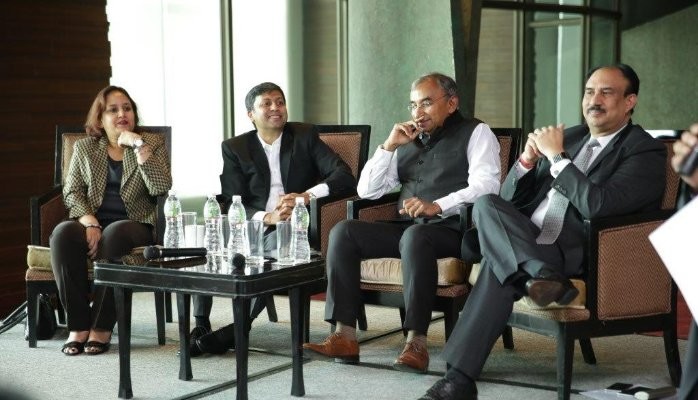
Growing leaders from within
From the 38th floor of the St. Regis Hotel the view of Mumbai was romantic. However, the three panelists including Madhavi Lal, Dr. Santrupt Misra and Judajith Das and the distinguished audience including several senior Talent management and Learning professionals and CFI (Coaching Foundation India) Coaches on the 38th Floor were candid to concede that the task of growing leaders from within was not as romantic. The power of the theme, “growing leaders from within – challenges and strategies” and the quality of panelists and participants made the CFI round-table around breakfast a grand success.
After two hours of soul searching reflection and debate several meaningful insights emerged. Here are some of these of the insights presented in the form of reflective statements. I am sure you will find these thought provokingly useful!
Our view of Leadership : The biggest challenge of growing leaders from within emanates from the rather narrow and rigid view that we hold about who a leader is and what it takes to qualify as one. Our pre-occupation with traits and characteristics of great people on one side and our temptation to over-engineer our leadership competency framework on the other side has resulted in the leadership job seeming almost impossible to fill. In a world where business is so complex, so demanding of expertise and innovation and so diverse in contexts there is an urgent need to make our notions of leadership a lot more inclusive, simple and broad based. By making our definitions more aligned to our real purpose we might find more leaders than we do today. In this context the fading preoccupation with engineering and the growing popularity of liberal arts education is a welcome development.
Managing release : At the heart of an organization’s ability to grow leaders from within is its deeply held conviction and value that talent belongs to the organisation and not to the manager – managers cannot hoard talented people. This has to be translated into affirmative policy and programs and cannot be a mere wish statement.
Whether Managers will release or not release their team members will depend on how well this belief is translated into action. It is well recognized that release always leads to disruption for the releasing manager and most managers do not like disruption and will therefore resist release.
Should release be managed through use of force or should it be managed through social processes of alignment to purpose, dialogue and recognition is often a dilemma. Under compelling circumstances, mandates and force might be necessary but, the dialogue process must keep happening.
Nobody is ready: One of the stark realities of growing leaders from within in today’s environment is that nobody internally is ever completely ready for a job. Even your best employees will never be plug and play. There will always be an element of risk and developmental headroom. The paradoxical situation seems to be that the very same leaders who were beneficiary of others placing bets on them, hesitate to perpetuate the virtuous cycle of placing bets on the people below them. They seem to say that they were one-of-a-kind!
Overvaluing external hires: The odds are typically stacked against internal talent as compared to external hires for the simple reason that we know a lot more about our internal talent and don’t think too well about what we know. On the other hand we know so little about external hires from the brief interviews we do but out of anxiety and hope ascribe a lot more to them than they deserve.
Making talent fungible: Meeting our needs from within requires that our talent must be somewhat fungible across functional and other boundaries. In other words, unless a talented person can be utilized in multiple areas he/she will never be an organisational resource. This will call for people to be trained to work across functions. We must also avoid the tendency of making jobs so super specialized that no one can fit into them easily unless found from outside.
Another factor that promotes growth from within is the ability of individuals to broaden their perspectives and world views. This includes the ability to respect other functions and other points of view, adjust to other styles, be able to work with diverse people and so on. This happens only when the individual gets to work with different people and is not stuck with one person for too long a time.
Individual choice: Of course, growth from within will get propelled only when individuals make the choice to offer themselves for such growth opportunities. For this individuals must be willing to take some risks and chances with their careers. These choice making processes can certainly be enabled through early career conversations.
Recognising those who develop talent: Most organizations seem to struggle to find ways to recognise leaders who nurture and release talent. Most performance and reward programs do not incorporate talent development as an important criterion. What is clear is that unless someone takes that personal interest, the grooming process will never happen. The larger question in many people’s mind is this – will we ever reach a time when leaders will be recognised by the organisation and his or her peers for their role in developing and grooming talent.
Role of CEO: While it appears easy to say that the CEO should champion the policy of growing leaders from within, it may be impractical for the CEO to arbitrate every release process. HR and other senior leaders also need to constantly engage in difficult conversations around this subject for this to happen.
So as you can see, growing talent from within is a deeply human and social endeavour – something that organisations will struggle to get right even though they all recognize that it is good for the long term.
